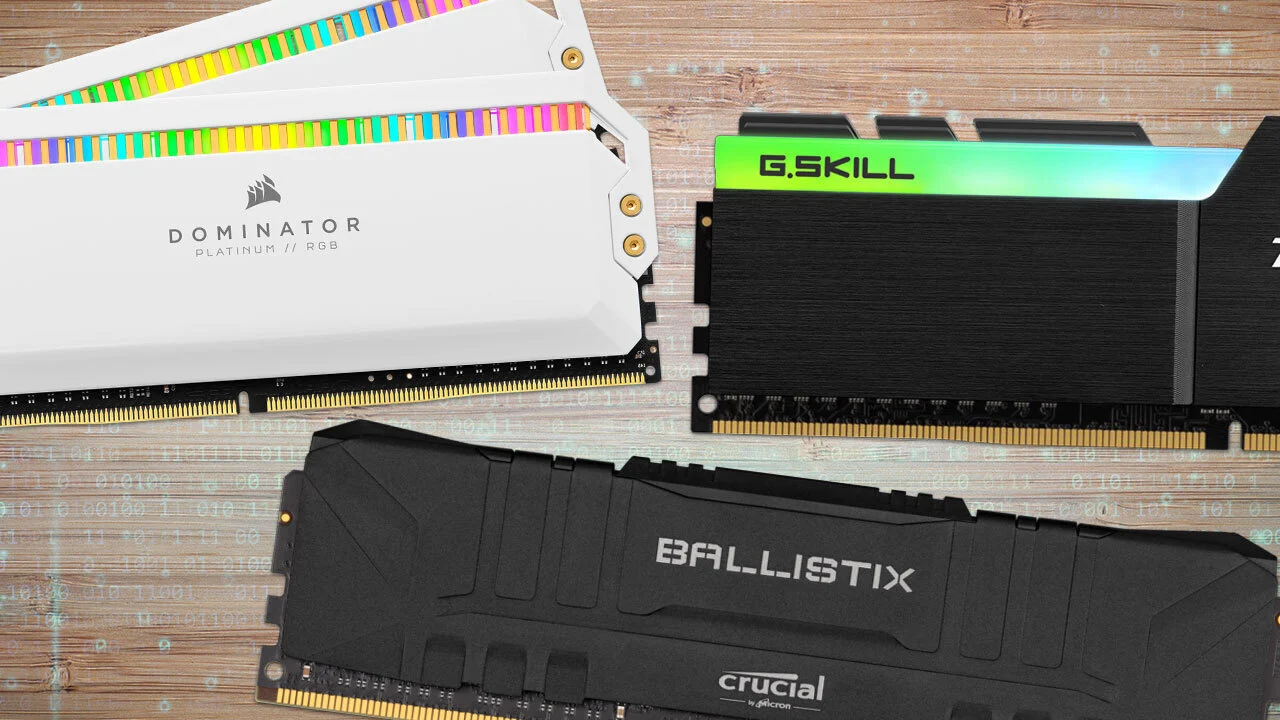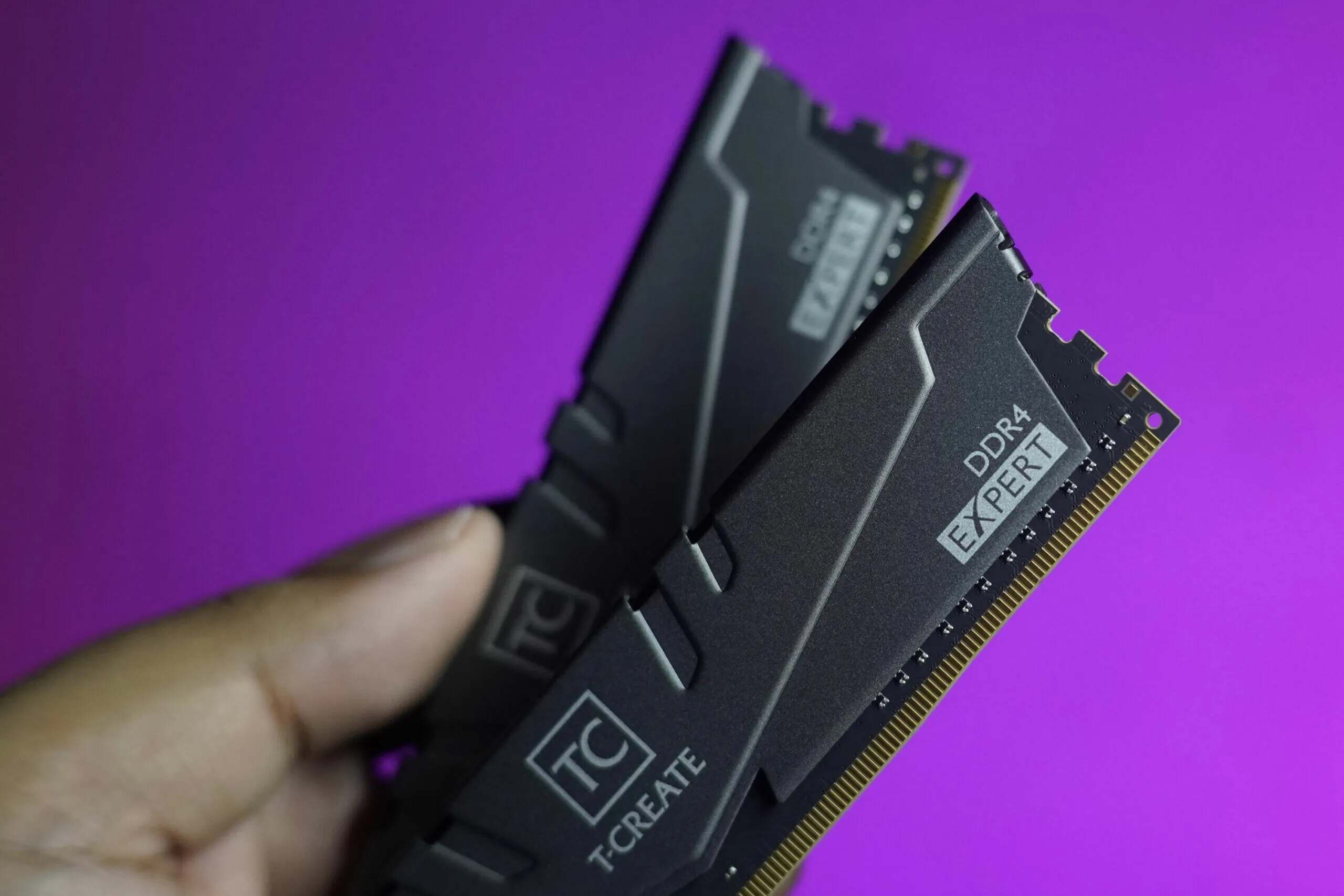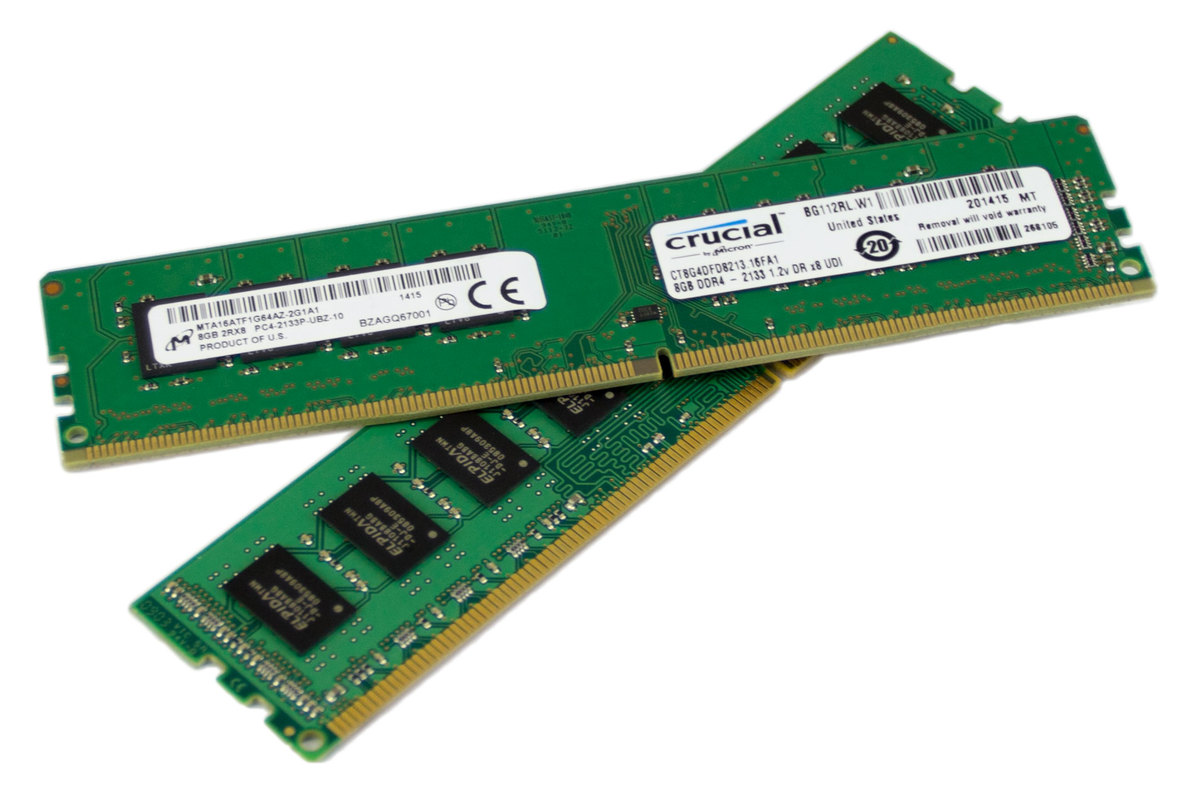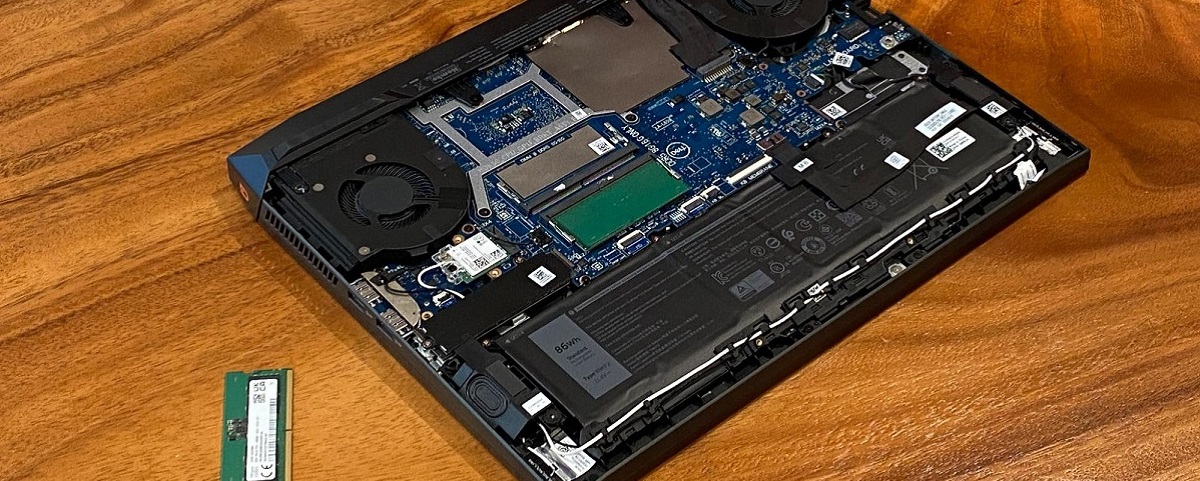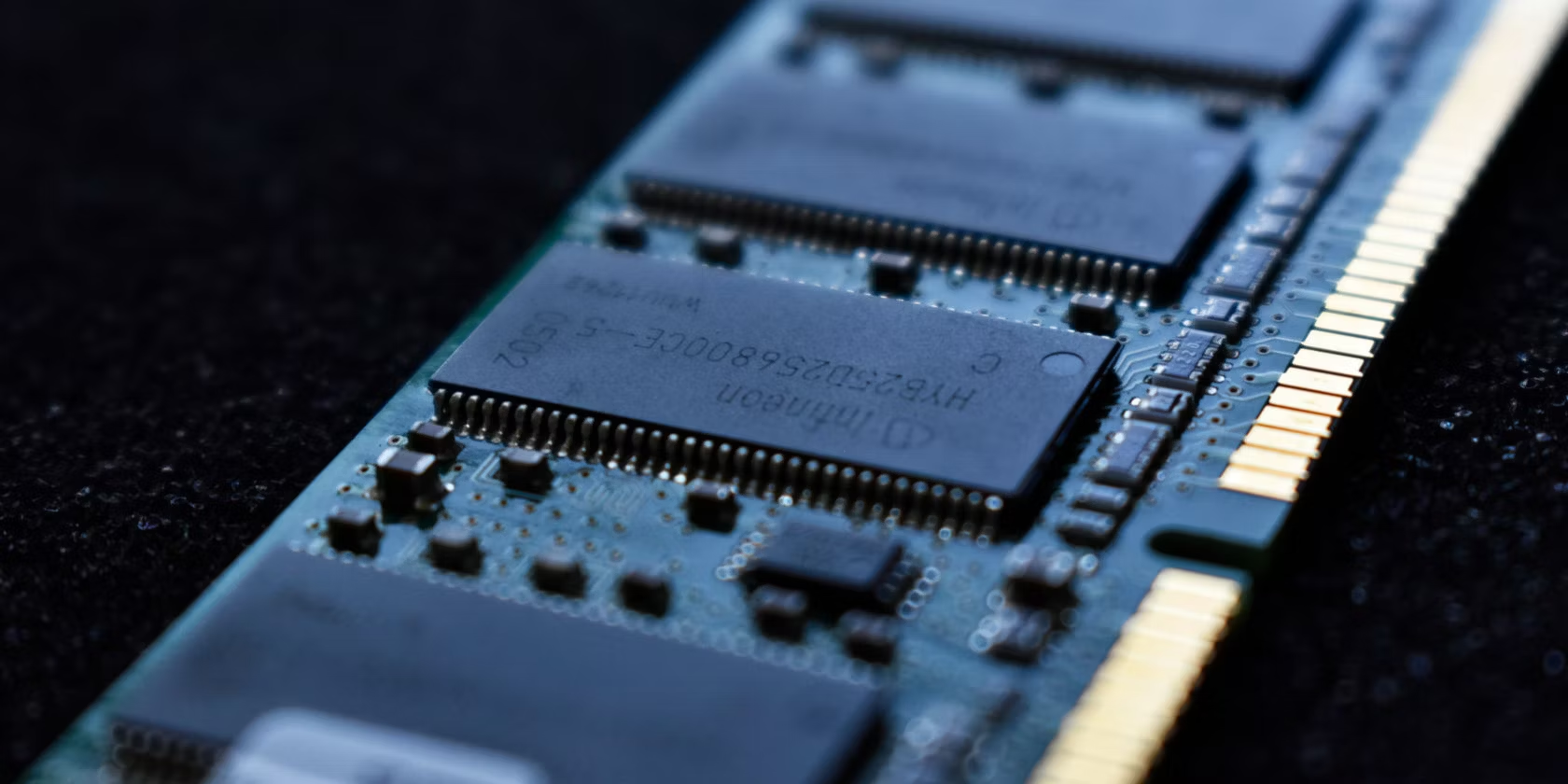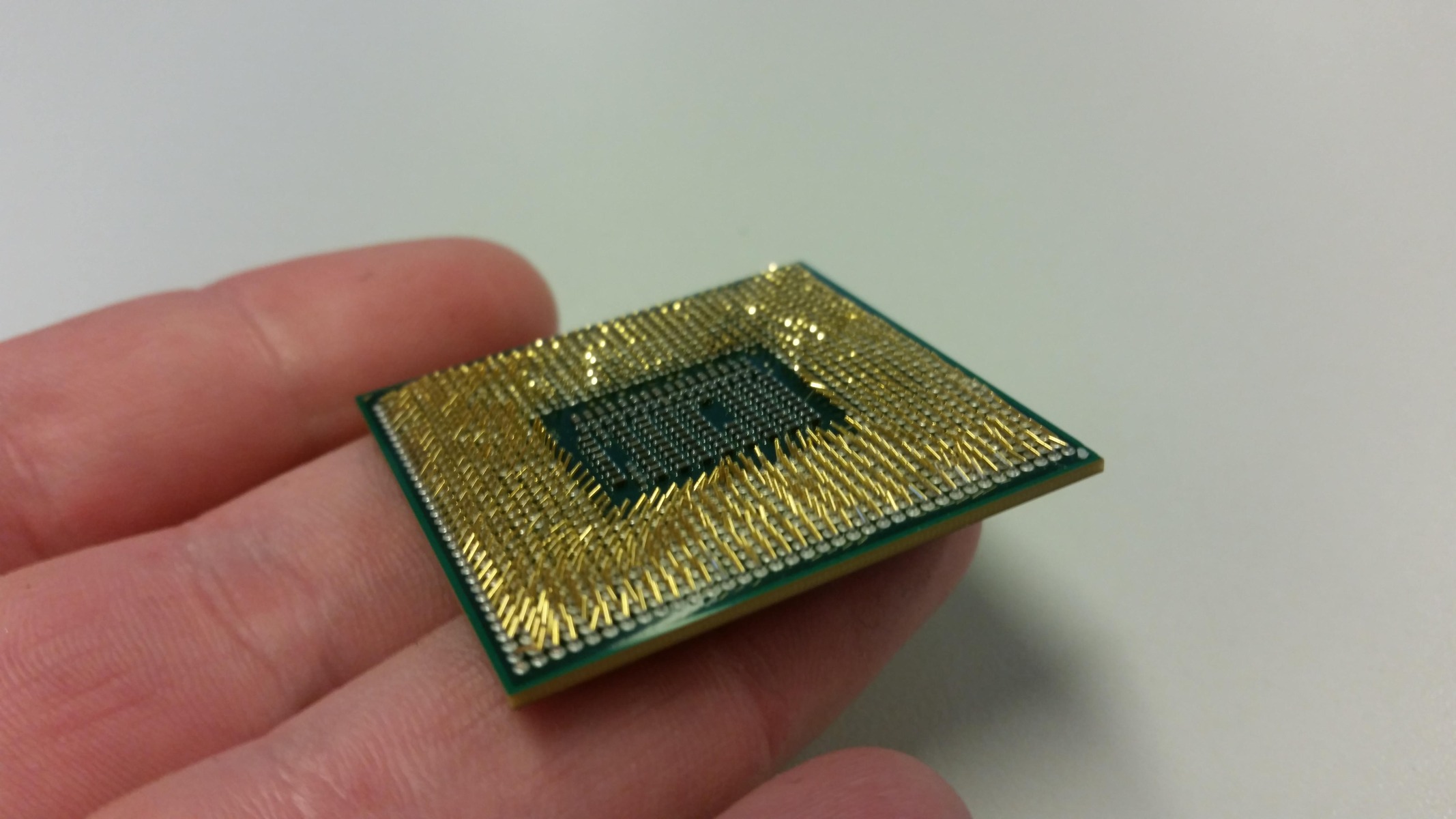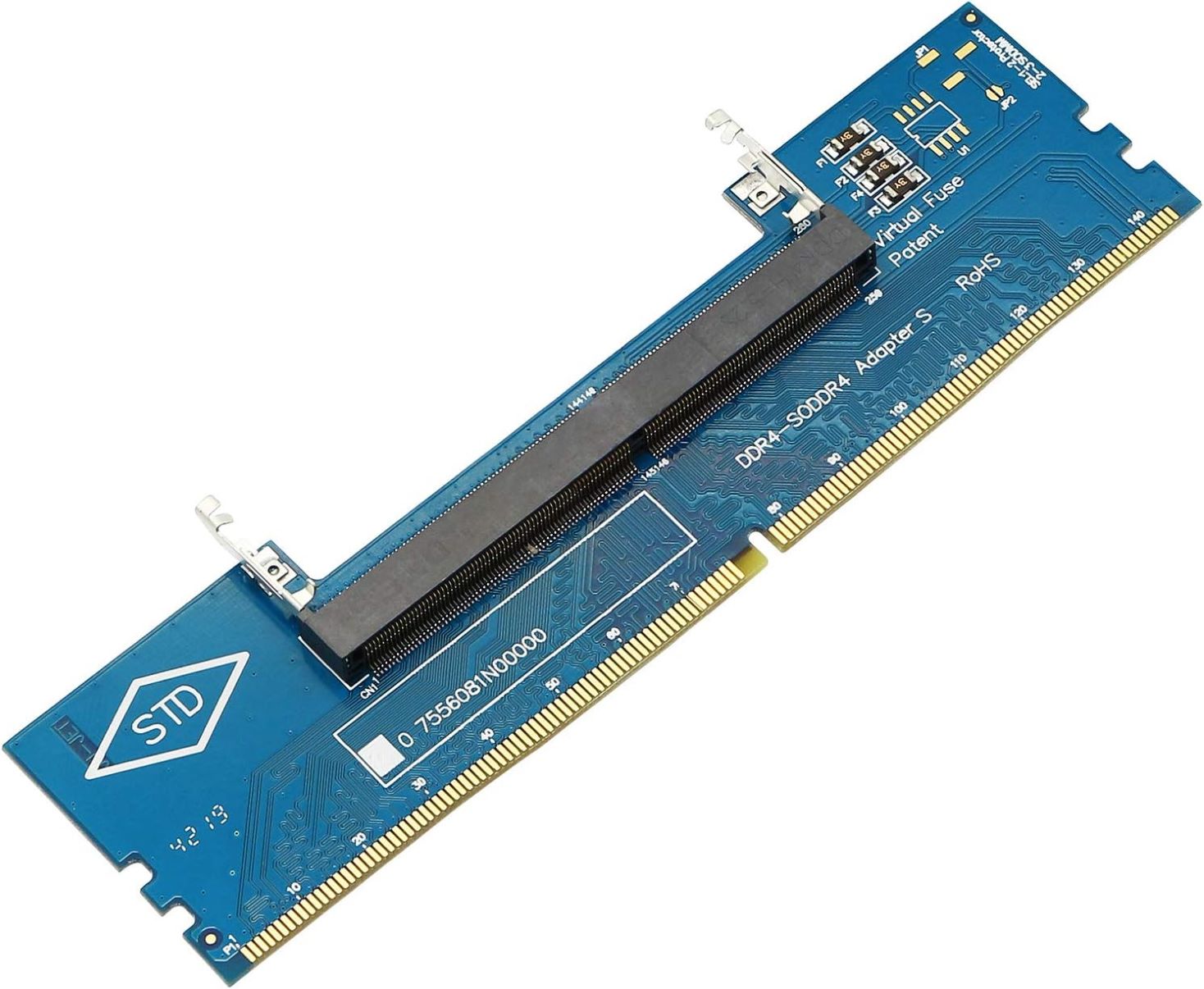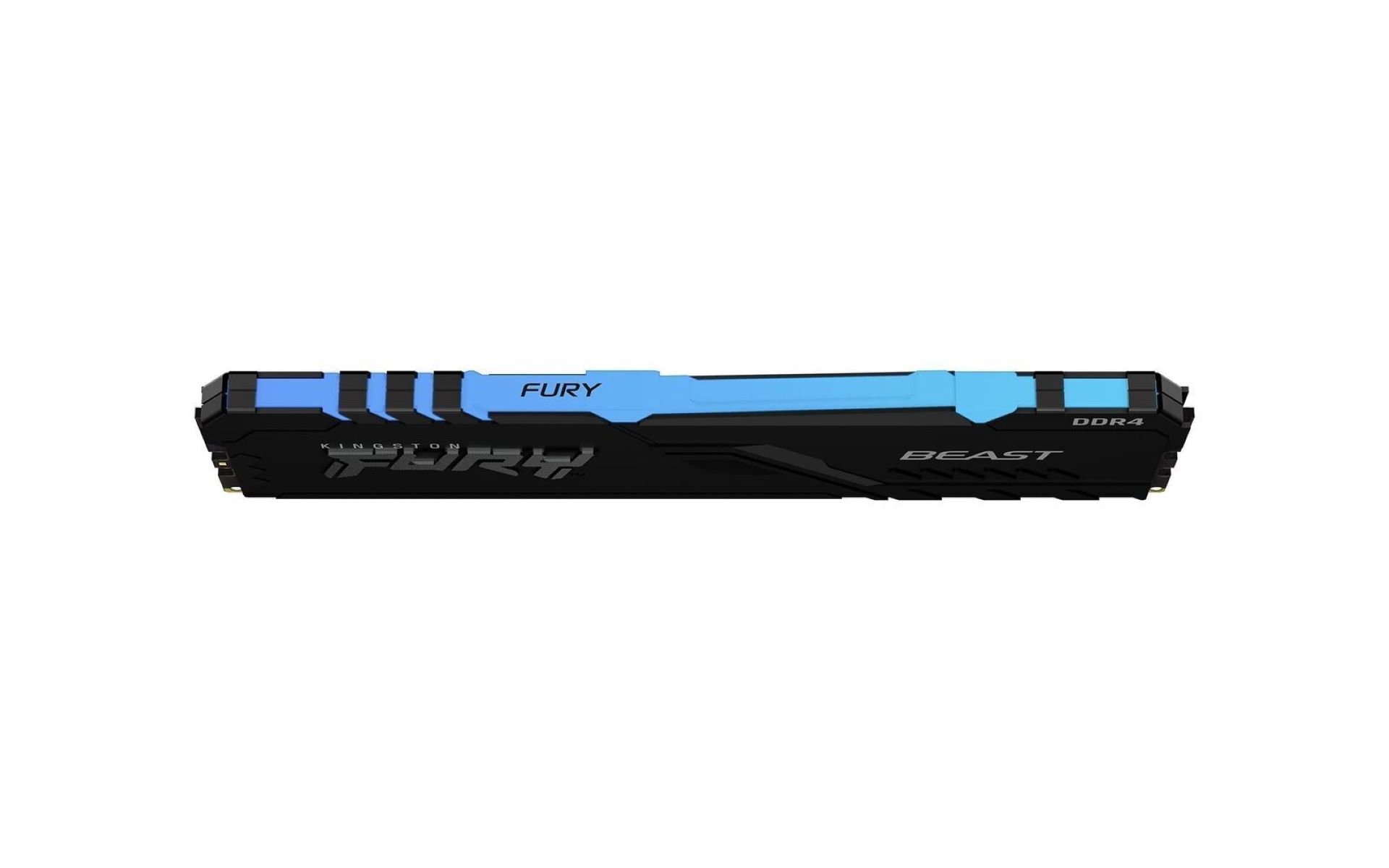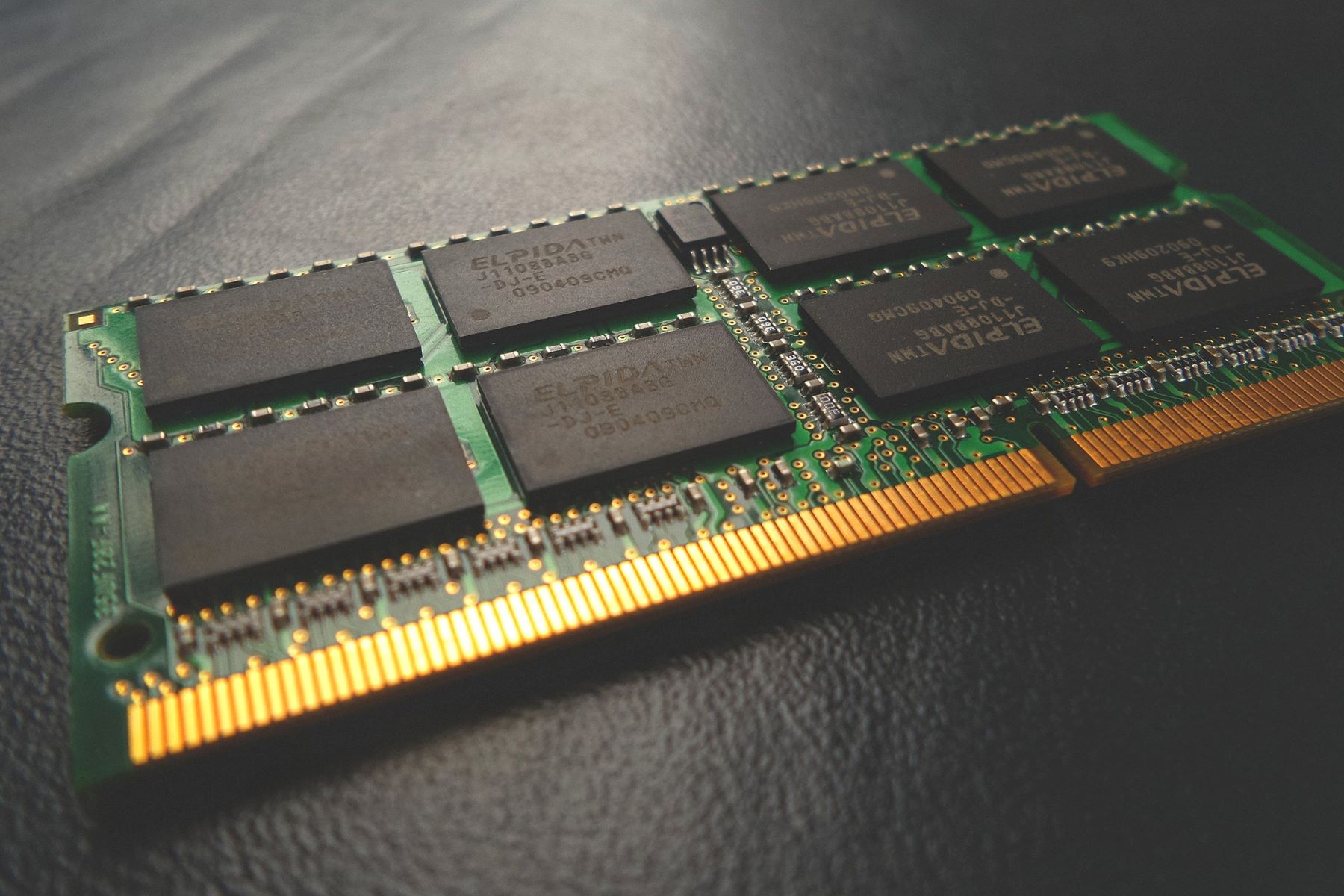Introduction
Welcome to the world of DDR4 RAM! When it comes to upgrading your computer’s performance, one component that often gets overlooked is the RAM. Random Access Memory, or RAM, plays a crucial role in the overall speed and multitasking capabilities of your system. If you’re still using older DDR3 or DDR2 RAM, it’s time to consider making the jump to DDR4.
DDR4 RAM, the latest generation of memory modules, offers numerous advancements over its predecessors. With faster speeds, increased capacity, and better energy efficiency, DDR4 RAM can significantly enhance your computer’s performance and responsiveness. Whether you are an avid gamer, a multimedia enthusiast, or a professional who relies on complex software applications, upgrading to DDR4 RAM can provide a noticeable boost to your overall computing experience.
In this article, we will guide you through the process of choosing the right DDR4 RAM for your system. We will explore the key factors you need to consider, such as memory capacity, speed, latency timings, voltage, compatibility with your motherboard, and budget considerations. By understanding these factors, you’ll be equipped with the knowledge needed to make an informed decision and ensure a smooth and efficient upgrade.
So, let’s dive in and discover why upgrading to DDR4 RAM is a smart choice for enhancing your computer’s performance.
What is DDR4 RAM?
DDR4 RAM, short for Double Data Rate 4 Random Access Memory, is the fourth generation of memory technology for computers. It is an essential component that temporarily stores data for your system to access quickly. DDR4 RAM offers several significant improvements over its predecessor, DDR3 RAM, that make it highly desirable for modern computing tasks.
One of the most notable advancements of DDR4 RAM is its increased memory capacity. DDR4 modules can support much larger capacities compared to DDR3, allowing you to have more RAM in your system. This increased capacity is particularly beneficial for resource-intensive tasks such as video editing, gaming, and running multiple virtual machines simultaneously.
Another crucial aspect of DDR4 RAM is its faster data transfer speeds. DDR4 RAM offers higher clock speeds, which means it can deliver data to your processor at a quicker rate. This results in improved system responsiveness and faster application loading times. Whether you’re playing graphics-intensive games or working on complex projects, the speed advantage of DDR4 RAM can significantly enhance your overall computing experience.
DDR4 RAM also boasts improved energy efficiency compared to its predecessors. Operating at lower voltages, DDR4 RAM consumes less power while maintaining high performance levels. This not only helps reduce energy consumption but also generates less heat, resulting in a cooler and quieter computer system.
Furthermore, DDR4 RAM has lower latency timings, which means data can be accessed and retrieved faster. This reduction in latency contributes to smoother multitasking, quicker data processing, and improved overall system performance.
It’s important to note that DDR4 RAM is not backward compatible with older DDR3 or DDR2 motherboard slots. To utilize DDR4 RAM, you will need a motherboard that supports DDR4 technology. Therefore, before upgrading to DDR4 RAM, ensure that your computer’s motherboard is compatible with this newer generation of memory.
In summary, DDR4 RAM offers significant performance enhancements compared to its predecessors. With larger memory capacities, faster data transfer speeds, improved energy efficiency, and lower latency timings, upgrading to DDR4 RAM can greatly improve your system’s performance, responsiveness, and efficiency.
Why Should You Upgrade to DDR4 RAM?
Upgrading to DDR4 RAM can bring several advantages and benefits to your computer system. Whether you’re a casual user, a gamer, or a professional in need of enhanced performance, here are some compelling reasons to consider upgrading to DDR4 RAM:
- Improved Performance: DDR4 RAM offers higher clock speeds and faster data transfer rates, resulting in improved system performance. You’ll experience faster application loading times, smoother multitasking, and overall snappier responsiveness.
- Increased Memory Capacity: DDR4 RAM modules generally support larger memory capacities compared to their DDR3 counterparts. This means you can have more RAM in your system, allowing you to handle resource-intensive tasks such as video editing, graphic design, and gaming with ease.
- Better Energy Efficiency: DDR4 RAM operates at lower voltages, consuming less power while maintaining high-performance levels. This not only helps reduce energy consumption but also keeps your system cooler and quieter.
- Enhanced Gaming Experience: If you’re a gamer, upgrading to DDR4 RAM can greatly improve your gaming experience. The faster data transfer speeds and reduced latency timings of DDR4 RAM ensure smoother gameplay with fewer stutters and delays.
- Future-Proofing: As DDR4 RAM becomes the standard in the industry, more software applications and games are optimized to take advantage of its capabilities. By upgrading to DDR4 RAM, you’re future-proofing your system and ensuring compatibility with upcoming software updates and advancements.
- Compatibility with Modern Motherboards: DDR4 RAM is designed to work with newer motherboard models that support DDR4 technology. If you’re building a new computer or upgrading your current system, DDR4 RAM is the logical choice to match the capabilities of modern motherboards.
Overall, upgrading to DDR4 RAM is an investment that can significantly improve your system’s performance, multitasking capabilities, energy efficiency, and gaming experience. Whether you’re a power user or a casual computer enthusiast, DDR4 RAM offers the necessary performance enhancements to meet your needs and ensure a smooth and efficient computing experience.
Factors to Consider When Choosing DDR4 RAM
Choosing the right DDR4 RAM for your system involves considering several key factors to ensure optimal compatibility and performance. Here are the important factors to keep in mind when selecting DDR4 RAM:
- Memory Capacity: Determine how much RAM you need based on your computing requirements. If you’re a casual user, 8GB to 16GB of DDR4 RAM should be sufficient. However, for gaming, video editing, or running demanding software, consider getting 32GB or even 64GB of RAM.
- Memory Speed: DDR4 RAM is available in various clock speeds, indicated by the RAM’s frequency rating. Higher clock speeds offer faster data transfer rates, resulting in better overall performance. Ensure that your motherboard supports the desired RAM speed.
- Latency Timings: Latency timings indicate how quickly the RAM responds to data requests. Lower latency timings are typically better, as they reduce delays when retrieving data. Look for RAM modules with lower CAS latency timings for optimal performance.
- Voltage: DDR4 RAM operates at different voltages, with most running at 1.2 volts. However, high-performance RAM may require more voltage to achieve its stated speed. Check your motherboard’s specifications to ensure compatibility with the RAM’s voltage requirements.
- Compatibility with Your Motherboard: Ensure that the DDR4 RAM you choose is compatible with your motherboard. Check the motherboard’s specifications for the supported RAM frequencies, capacity limits, and DDR4 module types (e.g., DDR4 DIMM or DDR4 SODIMM) it can accommodate.
- Budget Considerations: DDR4 RAM prices can vary based on capacity, speed, and brand. Set a budget and prioritize the factors that are most important to your specific needs (e.g., capacity, speed, or low latency). Balance your requirements with your budget to find the right DDR4 RAM within your price range.
By considering these factors, you can ensure that the DDR4 RAM you choose is compatible with your system and meets your performance requirements. It’s important to carefully balance your needs and budget to find the ideal DDR4 RAM that provides the best overall performance and value for your specific computing needs.
Memory Capacity
The memory capacity of DDR4 RAM is an important factor to consider when choosing the right RAM for your system. The memory capacity refers to the amount of RAM your computer can accommodate, and it’s measured in gigabytes (GB).
The required memory capacity depends on your specific usage requirements. For casual users who primarily use their computers for web browsing, email, and basic productivity tasks, a minimum of 8GB of DDR4 RAM is usually sufficient. This provides enough memory to handle these tasks smoothly without experiencing slowdowns or lag.
However, if you’re an avid gamer, content creator, or work with resource-intensive applications such as video editing software, you’ll benefit from having more RAM. In such cases, it is recommended to have at least 16GB or even 32GB of DDR4 RAM. This larger memory capacity allows for smoother multitasking, seamless gaming experiences, and faster rendering times.
For professionals who need to run virtual machines, work with large datasets, or perform complex simulations, even higher memory capacities may be required. In these scenarios, 64GB or more of DDR4 RAM can provide the necessary resources to handle these demanding tasks efficiently.
It’s important to note that the memory capacity also depends on the operating system you’re using. For example, a 32-bit operating system can only utilize up to 4GB of RAM. If you’re using a 64-bit operating system, you can take full advantage of higher memory capacities. Therefore, ensure that your operating system is compatible with the memory capacity you plan to install.
When selecting the memory capacity, consider future-proofing your system. As technology advances and software becomes more resource-hungry, you may find that your needs for memory capacity increase over time. Investing in a higher memory capacity from the start can save you from needing to upgrade sooner than you anticipated.
Ultimately, the memory capacity of your DDR4 RAM should align with your specific requirements and usage patterns. Assess your computing needs, consider future growth, and choose the appropriate memory capacity that will provide smooth performance and meet your needs for years to come.
Memory Speed
The memory speed, also known as the clock speed or frequency, is an important consideration when choosing DDR4 RAM. It refers to the speed at which data can be transferred between the RAM and the processor. The higher the memory speed, the faster the data can be accessed and processed.
DDR4 RAM comes in various speed ratings, typically denoted in MHz (megahertz). The memory speed is usually mentioned as part of the RAM’s product specifications. Common DDR4 RAM speed options range from 2133MHz to 4000MHz and beyond. However, it’s important to note that the achievable speed is dependent on both the RAM modules and the capabilities of your motherboard.
When it comes to memory speed, faster is generally better. Opting for RAM with higher clock speeds can result in improved system performance, particularly in tasks that involve large data transfers, such as gaming, video editing, and 3D rendering. The increased memory speed allows for quicker access to data, reducing the time your system needs to wait for instructions.
However, it’s crucial to consider the compatibility of the RAM speed with your motherboard. Not all motherboards support the highest DDR4 RAM speeds available. Consult your motherboard’s documentation or manufacturer’s website to determine the maximum supported RAM speed. Operating RAM at a speed higher than what your motherboard supports may result in the RAM downclocking to the maximum supported speed, negating the benefits of higher-speed RAM.
It’s also worth noting that the real-world performance gains from higher memory speeds might not always be significant, especially for everyday tasks like web browsing and word processing. In such cases, the difference in performance between DDR4 RAM with lower versus higher clock speeds may not be noticeable.
Ultimately, if you’re a power user, gamer, or involved in tasks that require high memory bandwidth, opting for DDR4 RAM with higher speed ratings can offer benefits. It’s important to weigh the cost implications, as RAM with higher clock speeds tends to be more expensive than those with lower speeds. Evaluate your specific computing needs and budget to strike a balance between performance and cost when choosing the memory speed of your DDR4 RAM.
Latency Timings
Latency timings, also known as CAS (Column Address Strobe) latency, are an important consideration when choosing DDR4 RAM. Latency timings represent the time it takes for the RAM to respond to a command and retrieve data after receiving a request from the processor.
Latency timings are typically represented in a series of numbers, such as 16-18-18-36, where the first number (CAS latency or CL) represents the primary timing and the subsequent numbers indicate secondary and tertiary timings. The lower the latency timings, the quicker the RAM can respond and retrieve data, resulting in improved overall system performance.
When it comes to latency timings, lower is generally better. RAM with lower CAS latency timings provides faster access to data, reducing the delay in fetching information and facilitating smoother and more responsive performance. This is particularly noticeable in tasks that involve frequent data access, such as gaming, video editing, and running memory-intensive applications.
However, it’s important to note that the impact of latency timings on real-world performance may be minimal for everyday tasks and basic computing needs. The difference in performance between RAM modules with different latency timings may not be noticeable in activities like web browsing, word processing, and general multitasking.
Choosing DDR4 RAM with the lowest possible latency timings may come at a higher cost. RAM modules with lower latency timings are often more expensive compared to those with higher timings. Therefore, it’s crucial to evaluate your computing requirements and budget to determine the level of latency timings that align with your needs.
Additionally, it’s essential to consider compatibility with your motherboard and the RAM modules themselves. Not all motherboards support the lowest latency timings available for DDR4 RAM. Verify the motherboard’s specifications and the RAM manufacturer’s recommendations to ensure that your chosen RAM modules will be compatible and run at their advertised latency timings.
In summary, while lower latency timings can contribute to improved system performance, the impact may vary depending on the specific tasks and applications involved. Consider your computing needs, budget, and compatibility factors to strike the right balance between low latency timings and overall system performance when choosing DDR4 RAM.
Voltage
The voltage requirements of DDR4 RAM are an important consideration when choosing the right RAM for your system. DDR4 RAM typically operates at a standard voltage of 1.2 volts, significantly lower than its predecessor, DDR3 RAM, which operated at 1.5 volts or higher.
The lower voltage of DDR4 RAM brings several advantages. Firstly, it helps reduce power consumption, making DDR4 RAM more energy-efficient. This can result in a longer battery life for laptops and lower electricity bills for desktop systems. The reduced power consumption also contributes to less heat generation, helping to maintain lower overall system temperatures.
While most DDR4 RAM modules operate at 1.2 volts, it’s important to note that high-performance RAM kits may require slightly higher voltages to achieve their stated speeds. These higher voltages are typically within safe operating limits and are necessary to support the increased performance levels offered by these kits.
When considering the voltage requirements, it’s crucial to ensure compatibility with your motherboard. Check the motherboard’s specifications to determine the voltage range it supports for DDR4 RAM. Most modern motherboards are designed to accommodate DDR4 RAM operating at 1.2 volts. However, some motherboards may offer additional support for higher voltage variants, such as 1.35 volts or higher, which are often marketed as “low voltage” or “ultra-low voltage” options.
Using DDR4 RAM modules with higher voltages than what your motherboard supports can result in compatibility issues or potential damage to the motherboard or RAM modules. On the other hand, using DDR4 RAM modules that operate at lower voltages than what your motherboard supports should not cause any issues, as the RAM modules will typically run at the supported voltage.
When choosing DDR4 RAM, ensure that the voltage requirements of the RAM modules align with the supported voltage range of your motherboard. This can help ensure compatibility, optimal performance, and the longevity of your system by providing stable power delivery to the RAM modules.
In summary, DDR4 RAM operating at 1.2 volts offers energy efficiency, lower heat generation, and compatibility with most modern motherboards. However, it’s important to verify the voltage compatibility with your specific motherboard to ensure smooth operation and compatibility before making a purchase decision.
Compatibility with Your Motherboard
One crucial factor to consider when choosing DDR4 RAM is compatibility with your motherboard. It’s important to ensure that the DDR4 RAM modules you select are compatible with the specifications and requirements of your motherboard.
When it comes to compatibility, the first consideration is the type of DDR4 RAM module your motherboard supports. There are two main types: DDR4 DIMM (Dual In-Line Memory Module) and DDR4 SODIMM (Small Outline Dual In-Line Memory Module). DDR4 DIMM modules are used in desktop computers, while DDR4 SODIMM modules are typically used in laptops and small form-factor systems.
Ensure that you choose the correct module type, DDR4 DIMM or DDR4 SODIMM, depending on the slot type and form factor supported by your motherboard. Attempting to install the wrong type of DDR4 RAM module will likely result in incompatibility and the inability to properly mount the RAM.
In addition to the physical module type, consider the RAM speed and capacity supported by your motherboard. Check the specifications of your motherboard to determine the maximum supported RAM speed and the maximum capacity per RAM slot. It’s important to note that different motherboards have varying limits, so make sure your chosen DDR4 RAM modules fall within these limits.
Another important aspect of compatibility is the number of RAM slots available on your motherboard. Determine the number of slots and the maximum total capacity supported. This will help you determine the total maximum RAM capacity you can install in your system.
Some motherboards may also have specific requirements regarding the configuration or pairing of RAM modules. For example, they may require RAM modules to be installed in specific slots or require modules to be of the same capacity or speed to unlock certain performance benefits. It’s essential to consult the motherboard’s manual or manufacturer’s website to understand any specific requirements or recommendations.
Lastly, consider any compatibility features or technologies that your motherboard may support, such as XMP (eXtreme Memory Profile), which allows for easy overclocking and optimized performance settings for your DDR4 RAM.
By verifying compatibility with your motherboard, you can ensure that the DDR4 RAM modules you choose will work seamlessly with your system. This will save you from potential compatibility issues and ensure optimal performance and stability when upgrading your RAM.
Budget Considerations
When choosing DDR4 RAM, it’s important to consider your budget. DDR4 RAM modules come in various price ranges, and finding the right balance between performance and cost is crucial.
First, determine your specific requirements and usage patterns. Evaluate the tasks you frequently perform on your computer and assess the amount of RAM you need. If you’re a casual user who engages in web browsing, email, and basic productivity tasks, you can opt for a lower capacity, such as 8GB or 16GB, which tends to be more affordable.
If you’re a gamer, content creator, or work with memory-intensive applications, you may need a higher memory capacity, which can increase the cost. Consider your specific needs and budget accordingly. Balancing your requirements with your budget will help ensure that you get the necessary performance without overspending on RAM capacity that you may not fully utilize.
Another aspect to consider is the memory speed and latency timings. Higher memory speed and lower latency timings can contribute to better performance but usually come at a higher price. Evaluate your specific needs and determine if the performance gains from faster memory justify the additional cost. In some cases, the real-world performance difference may not be significant, and opting for more affordable RAM with slightly lower speeds or higher latency may be a more cost-effective choice.
It’s also worth checking for any ongoing promotions, sales, or discounts on DDR4 RAM. Prices can vary across different manufacturers and retailers. Take the time to shop around and compare prices to ensure you’re getting the best value for your money.
Consider reputable brands that offer a balance between quality and price. Well-established manufacturers often provide reliable products with good warranties, ensuring peace of mind and support.
While it’s important to stay within your budget, it’s equally crucial to avoid compromising on quality. Opting for RAM from lesser-known or unreliable sources may result in compatibility issues, poor performance, or a lack of customer support. It’s essential to strike a balance between affordability and quality when making your purchase decision.
By considering your budget and evaluating your specific needs, you can find DDR4 RAM modules that offer the best value for money. Remember to prioritize your requirements, assess performance differences objectively, and source from reputable brands or retailers to ensure a satisfactory purchase within your budget constraints.
Conclusion
Choosing the right DDR4 RAM is essential for optimizing your system’s performance and ensuring compatibility with your motherboard. Upgrading to DDR4 RAM can bring significant improvements in speed, multitasking capabilities, and overall responsiveness.
When selecting DDR4 RAM, consider factors such as memory capacity, memory speed, latency timings, voltage, compatibility with your motherboard, and budget. The memory capacity should align with your specific usage requirements, with options ranging from 8GB for casual users to higher capacities like 32GB or even 64GB for gamers and resource-intensive applications.
The memory speed of DDR4 RAM determines the data transfer rate and overall performance. Higher clock speeds provide faster access to data, but it’s important to ensure compatibility with your motherboard’s supported speeds.
Latency timings and voltage are also important considerations. Lower latency timings result in faster response and smoother performance, while lower voltage offers better energy efficiency and reduced heat generation.
Compatibility with your motherboard is crucial to ensure that the DDR4 RAM modules you choose are compatible with the motherboard’s specifications, form factor, and RAM slot limitations. Check the motherboard’s documentation or manufacturer’s website for specific compatibility guidelines.
Lastly, consider your budget when choosing DDR4 RAM. Strive to find a balance between performance and cost, prioritizing your specific needs and evaluating the performance gains from higher-priced options.
In conclusion, upgrading to DDR4 RAM can greatly enhance your computer’s performance and responsiveness. By considering the factors mentioned above, you can select the right DDR4 RAM that aligns with your requirements, ensuring a seamless and efficient computing experience.







